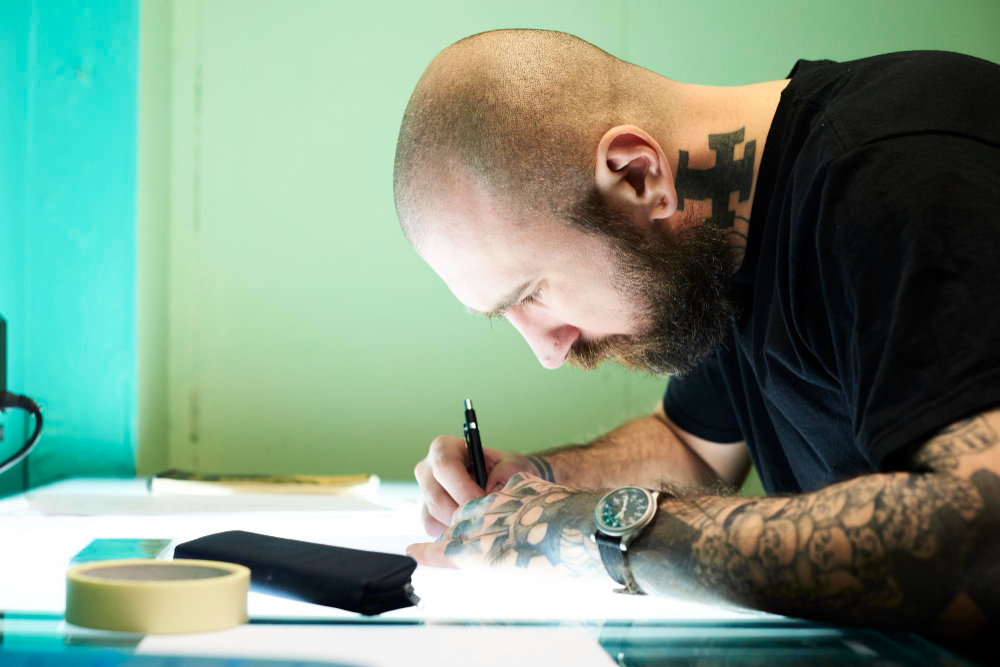Ever Wondered How Does Tattooing Works?

Tattoos have been a form of self-expression and cultural tradition for thousands of years, but have you ever wondered how tattooing works? From the tools used to the process itself, tattooing is a fascinating art form that combines skill, creativity, and technique. In this article, we’ll take a closer look at the intricate world of tattooing and explore how this ancient practice has evolved into the modern art form we know today.
The Anatomy of a Tattoo Machine
At the heart of the tattooing process is the tattoo machine, a handheld device that delivers ink to the skin. Modern tattoo machines consist of several key components, including a motor, a needle bar, and a grip or handle. The motor powers the needle bar, which moves up and down rapidly, puncturing the skin with a cluster of needles attached to the end. The grip or handle provides a comfortable and ergonomic grip for the tattoo artist to hold during the tattooing process.
Choosing the Right Tattoo Needles
Tattoo needles come in a variety of shapes and configurations, each designed for different purposes and techniques. Round needles are commonly used for outlining and fine lines, while flat needles are ideal for shading and filling in larger areas of color. Magnum needles, also known as magnums or mags, are used for blending colors and creating gradients. Tattoo artists carefully select the appropriate needles based on the design and desired effect of the tattoo.
Preparing the Skin for Tattooing
Before beginning the tattooing process, the skin must be properly prepared to ensure a clean and successful tattoo. The tattoo artist starts by cleaning the skin with antiseptic soap and water to remove any dirt, oil, or bacteria. Next, they apply a stencil of the desired design onto the skin using transfer paper and a stencil solution. Once the stencil is in place, the artist can begin tattooing, following the outline of the design with the tattoo machine.
From Start to Finish
Tattooing is a multi-step process that requires precision, skill, and attention to detail. The artist begins by outlining the design with a single needle, creating crisp lines and defining the shape of the tattoo. Once the outline is complete, the artist switches to larger needles and begins filling in the design with color or shading, layer by layer. Throughout the process, the artist periodically wipes away excess ink and blood with a clean paper towel to keep the skin clear and visible.
What to Expect After Getting a Tattoo
After the tattooing process is complete, the skin may be red, swollen, and sensitive to the touch. This is a normal part of the healing process, and most tattoos take about two to four weeks to fully heal. During this time, it’s essential to follow the aftercare instructions provided by your tattoo artist, which typically include keeping the tattoo clean and moisturized, avoiding direct sunlight and swimming, and refraining from picking or scratching at the tattooed area.
Tattoo Styles and Techniques
Tattooing is a diverse and versatile art form that encompasses a wide range of styles and techniques. From traditional Americana and Japanese-inspired designs to modern realism and abstract art, there’s a tattoo style to suit every taste and aesthetic. Some popular tattoo techniques include black and gray shading, watercolor, dotwork, and geometric patterns. Tattoo artists often specialize in specific styles or techniques, honing their skills and developing their unique artistic voice.
Tattooing as a Form of Self-Expression
For many people, getting a tattoo is more than just a decorative art form—it’s a deeply personal and meaningful expression of identity, beliefs, and experiences. Tattoos can commemorate significant life events, honor loved ones, or serve as a form of empowerment and self-expression. Whether it’s a small symbol with profound meaning or a large-scale masterpiece, each tattoo tells a unique story and carries a special significance for the wearer.
Embracing the Artistry of Tattooing
Tattooing is a centuries-old tradition that continues to captivate and inspire people around the world. From the intricate design process to the skilled application of ink, tattooing is a true art form that requires creativity, precision, and dedication. Whether you’re considering getting your first tattoo or adding to your existing collection, take the time to research reputable tattoo artists, explore different styles and techniques, and find a design that speaks to you. After all, a tattoo is not just a mark on the skin—it’s a reflection of who you are and what you value.
No Comments
Add Comment